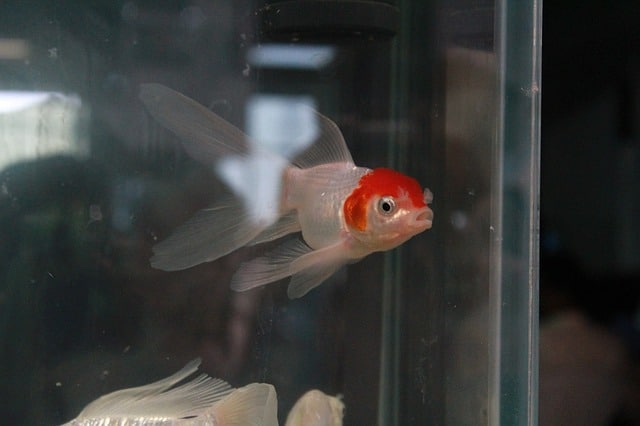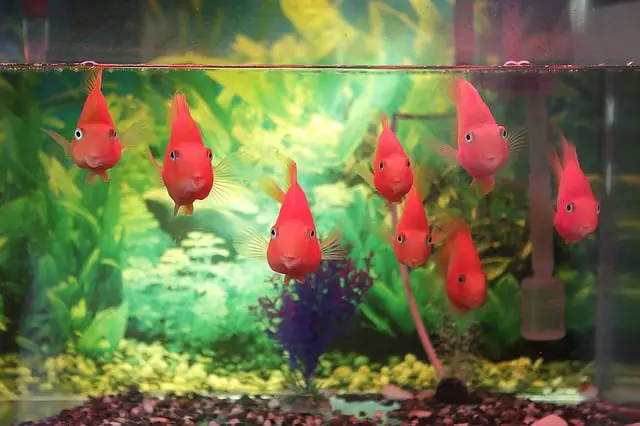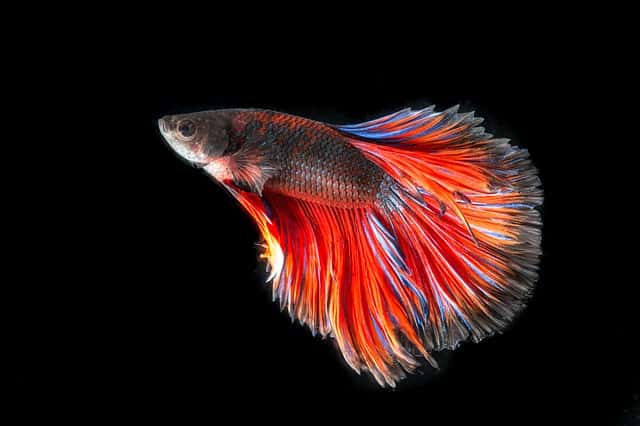When you own an aquarium and have fish stocked in it, the last thing you want to do is add chemicals willy-nilly and kill the fish! Of course, it is always a smart idea to follow instructions on the products packaging. There are times, however, when you can do something a bit different than the package’s instructions once you understand how the product works.
You can add a water conditioner directly into the fish tank if needed. I would recommend doing something to draw the fish away from the location where you will be pouring the conditioner. For example, feed the fish on one side of the tank and pour the water conditioner on the other side of the aquarium.
There are multiple types of aquarium water conditioners available that you might need or feel you have to add directly to your tank for whatever reason. A few of the more commonly known and used types are biological enhancers, tap water conditioner and de-chlorinators as well as stress coats conditioners.
Let’s begin!
What’s Wrong with Adding a Water Conditioner Directly to Your Fish Tank?
The problem you run into with adding water conditioners directly to a tank is the high concentration of the product you are placing in the water.
Think about it – even if you are using something so safe as a water de-chlorinator. If you poured that directly into the tank and a fish just happened to inhale it fully with no water, what do you think would happen to the fish?
I don’t know about you, but I just wouldn’t want to risk that happening, regardless of what might happen. Maybe the fish would be just fine but what if they weren’t? What if the conditioner harmed your fish? I know you don’t want that.
These products are concentrated, which is why you must mix small amounts of them with water before adding it to a fish tank. Therefore, a full dose even though helpful overall in the tank could potentially be dangerous to fish in this dosage.
How Do You Condition Water for a Fish Tank?
In my own experience, I condition water one of two ways.
- Following the instructions on the conditioners packaging, use treated tap or RO water to mix the appropriate ratio of water to conditioner.
- Treated tap water is used mostly in freshwater tanks and Reverse Osmosis (RO) water in saltwater tanks. Just wanted to point that out in case you wondered why I listed the two types of water.
- The second option for mixing conditioner is to scoop an appropriate amount of water right out of the fish tank, again using the correct ratio of water to conditioner and pouring it back into the tank.
It’s just that simple. The hard part, if there is one, is to make sure you mix the correct amount of both parts water and conditioner.
You want to ensure a proper dosage of conditioner while not over or under dosing. If you were ever going to err, I would err on the side of under dosing.
Can Too Much Water Conditioner Kill Fish?
If you are mixing a bit too much conditioner with the water before adding it to the tank, chances are the water conditioner won’t kill your fish. That said, I would make sure to correct the amount you mix in the next time.
If you have sick fish, then sure, just about anything you do could potentially kill the sick fish. The reality is however, adding too much water conditioner shouldn’t kill your fish.
Does Aquarium Water Conditioner Expire?
I would expect that most water conditioners do come with an expiry date. I am sure you can stretch the usage out a bit past the date however, I wouldn’t push it too much.
Remember, we are talking about the life of your fish here.
If you don’t see any ‘best before’ dates on the containers, then you are in luck.

How Long After Adding a Water Conditioner Can I Add Fish?
How long does aquarium water conditioner take to work, you ask?
The wonderful thing about water conditioners is they work immediately. If you are mixing a de-chlorinator, the conditioner neutralizes the chlorine immediately. So, this means technically you could mix the water with your fish right away.
What you should be aware of though, is the water might be conditioned, but is it the right temperature for your fish tank?
If you were to pour water out of your tap into a mixing container such as a 5-gallon jug (that’s what I use) and then mix the conditioner and pour it into the tank, the temperature probably wouldn’t be where it should be.
Unless you have cold water fish such as goldfish. If you have tropical fish, they might go into shock and if that happens you could lose some of the weaker fish.
I always keep my 5-gallon jug filled and treated right after doing a water change. I would also do it if I was using water conditioners as well. It’s just something for you to be aware of.
Should You Take Fish Out of the Tank When Adding a Water Conditioner?
You definitely don’t need to take any fish out of your aquarium if you are mixing the conditioner with water outside of the tank then adding it to existing water.
When done like this, the concentration will be diluted so it won’t cause any problems in the fish tank.
Plus, that is a lot of work to scoop fish out and then put them back in afterwards. It would also cause undue stress on the fish.
Conclusion
To conclude this article, I want to go over the important points.
Yes, you can add a water conditioner directly to your fish tank however, it is not the correct way to do so.
The correct way would be to add conditioner to new water that has been treated for the tank, or to water taken out of the tank for the purpose of mixing it with the water conditioner.
Typically, the conditioner will be added to new water as some conditioners are made specifically for that purpose. They will clear up any chlorine or other harmful chemicals found in most tap waters.
Thanks for reading and good luck!
Related Posts
My Fish Tank Stinks! What are the Causes and the Fixes?
How do you cycle an aquarium – The Nitrogen Cycle
How to Lower Nitrate Levels in an Aquarium (Freshwater and Saltwater Tanks)?




